Introduction
Stir-fried abalone with ginger and scallions is a dish that epitomizes the harmony of flavors and textures in Cantonese cuisine. Revered for its delicate taste and luxurious presentation, abalone—a prized shellfish—is elevated by the aromatic punch of ginger and the fresh crunch of scallions. This dish, while seemingly simple, requires precision in technique and respect for the ingredients to achieve its full potential. In this comprehensive guide, we will explore the history of abalone in culinary traditions, the science behind its preparation, and a step-by-step breakdown of how to create this restaurant-quality dish at home. Whether you are a seasoned home cook or a curious food enthusiast, this article will equip you with the knowledge to master this iconic recipe.
The Cultural Significance of Abalone
Abalone, known as “bao yu” in Chinese, has been a symbol of wealth and prosperity for centuries. Historically, it was reserved for emperors and nobility due to its rarity and the labor-intensive process of harvesting it from rocky coastal shores. Today, while abalone is more accessible, it remains a coveted ingredient, particularly during festive occasions such as Lunar New Year celebrations. Its chewy yet tender texture and briny sweetness make it a versatile canvas for culinary creativity, but the classic pairing with ginger and scallions endures as a timeless favorite.
Understanding Abalone: Types and Preparation
Before diving into the recipe, it is essential to understand the different varieties of abalone and how to select the best quality for your dish.
- Fresh vs. Frozen Abalone: Fresh abalone is ideal but can be challenging to source outside of coastal regions. Frozen abalone, if properly handled, retains most of its texture and flavor. Look for vacuum-sealed packages with no freezer burn.
- Dried Abalone: A premium option, dried abalone (“kan buk” in Cantonese) requires rehydration and is often used in braised dishes. For stir-frying, fresh or frozen abalone is preferred.
- Cleaning Abalone: Cleaning abalone is a critical step. Using a stiff brush, scrub the exterior to remove debris. To detach the meat from the shell, insert a spoon between the flesh and the shell, gently prying it loose. Trim the dark intestinal tract and any tough muscles.
Ingredients: Building the Flavor Profile
The success of this dish hinges on balancing the abalone’s natural flavor with complementary aromatics. Below is a detailed list of ingredients, along with substitutions for accessibility:
- Abalone (4 medium-sized, approximately 1.5 lbs total): Opt for live abalone if possible, as their texture is superior. Frozen abalone should be thawed slowly in the refrigerator.
- Ginger (3-inch knob, peeled and julienned): Fresh ginger imparts a warm, peppery note that cuts through the abalone’s richness.
- Scallions (1 bunch, white and green parts separated): The white parts are stir-fried for depth, while the green parts add a fresh finish.
- Garlic (4 cloves, minced): Optional but recommended for added complexity.
- Shaoxing Wine (2 tbsp): A Chinese rice wine that enhances umami. Dry sherry is a suitable substitute.
- Oyster Sauce (1 tbsp): For savory depth. Vegetarian oyster sauce works for plant-based diets.
- Soy Sauce (1 tsp): Use light soy sauce to avoid overpowering the abalone.
- Sesame Oil (1 tsp): A finishing touch for aromatic richness.
- Cornstarch (1 tsp): Mixed with water to create a slurry for glossy sauce.
- Peanut Oil (3 tbsp): High-smoke-point oil for stir-frying.
Equipment Essentials
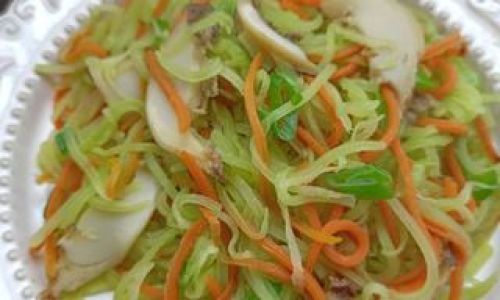
- Carbon Steel Wok: Essential for high-heat cooking and even heat distribution.
- Cleaver or Sharp Knife: For precision slicing.
- Bamboo Steamer: Optional, for a gentle thawing method for frozen abalone.
Step-by-Step Preparation
Preparing the Abalone
- Slicing Technique: Abalone must be sliced thinly against the grain to ensure tenderness. Place the abalone on a cutting board, flesh-side up. Using a sharp knife at a 45-degree angle, slice the meat into 1/8-inch thick pieces. This diagonal cut exposes more surface area, allowing the abalone to cook quickly and absorb flavors.
- Marinating: In a bowl, combine the sliced abalone with 1 tbsp of Shaoxing wine, 1/2 tsp of cornstarch, and a pinch of white pepper. Marinate for 15 minutes to tenderize and season.
Preparing the Aromatics
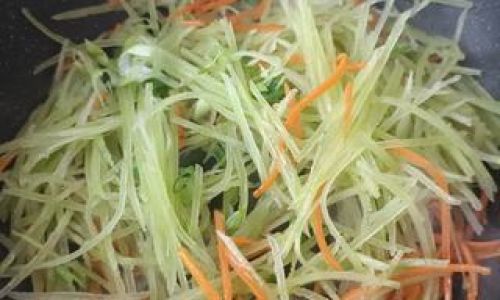
- Ginger: Julienne the ginger into thin, matchstick-like pieces. This shape ensures even cooking and maximum flavor release.
- Scallions: Separate the white and green parts. Slice the white portions into 1-inch segments, and chop the green parts into 2-inch pieces.
- Garlic: Mince the garlic finely to distribute its flavor throughout the dish.
Mastering the Stir-Fry Technique
Stir-frying is a dance of heat, timing, and motion. Follow these steps for perfection:
- Heating the Wok: Place the wok over high heat until wisps of smoke rise. Add 2 tbsp of peanut oil and swirl to coat the surface. A well-seasoned wok will prevent sticking.
- Searing the Aromatics: Add the ginger and white scallion segments. Stir-fry for 30 seconds until fragrant but not browned.
- Adding the Abalone: Introduce the marinated abalone slices, spreading them in a single layer. Allow them to sear undisturbed for 20 seconds to develop a caramelized crust.
- Tossing and Coating: Use a wok spatula to toss the abalone vigorously for 1 minute. The high heat will cook the meat rapidly while preserving its texture.
- Seasoning: Drizzle the remaining Shaoxing wine around the wok’s edge to deglaze any browned bits. Add the oyster sauce, soy sauce, and minced garlic. Stir-fry for an additional 30 seconds.
- Thickening the Sauce: Push the ingredients to one side of the wok. On the empty side, add the cornstarch slurry and stir until thickened. Combine everything and toss to coat.
- Finishing Touch: Remove from heat and drizzle with sesame oil. Fold in the scallion greens, allowing them to wilt slightly from residual heat.
Plating and Presentation
Transfer the stir-fried abalone to a heated serving platter. Garnish with additional scallion curls or a sprinkle of toasted sesame seeds. The dish should be served immediately to showcase its vibrant colors and textures.
Tips for Success
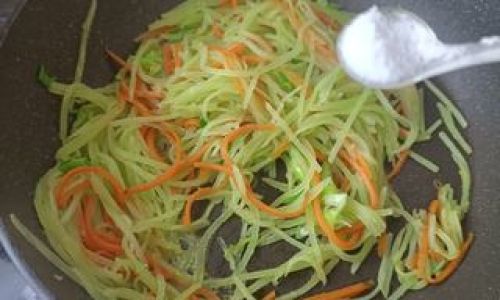
- Heat Control: Maintain high heat throughout the cooking process to ensure the abalone cooks quickly without becoming rubbery.
- Avoid Overcrowding: Cook the abalone in batches if necessary to prevent steaming, which can lead to toughness.
- Timing: Overcooking abalone will result in a chewy texture. The entire stir-frying process should not exceed 3–4 minutes.
Variations and Innovations
While the classic recipe is unparalleled, feel free to experiment:
- Vegetable Additions: Stir-fry bell peppers, mushrooms, or baby bok choy alongside the abalone for a complete meal.
- Spicy Kick: Add sliced chili peppers or a dash of chili oil during the final toss.
- Herb Infusions: Garnish with cilantro or Thai basil for a fragrant twist.
Troubleshooting Common Issues
- Tough Abalone: This is often due to overcooking or improper slicing. Ensure thin, against-the-grain slices and strict timing.
- Bland Flavor: Increase the oyster sauce or add a pinch of sugar to balance the saltiness.
- Soggy Texture: Ensure the wok is sufficiently heated before adding oil. Avoid overcrowding the pan.
Nutritional Benefits
Abalone is a low-fat, high-protein seafood rich in iodine, iron, and vitamin E. Ginger aids digestion, while scallions provide antioxidants. This dish offers a guilt-free indulgence that aligns with health-conscious diets.
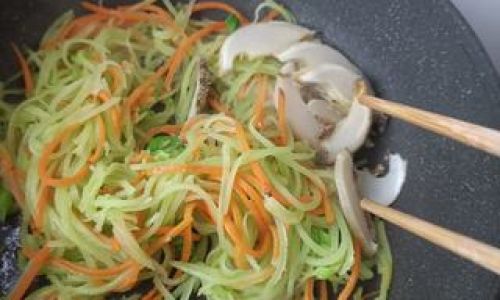
Conclusion
Stir-fried abalone with ginger and scallions is more than a recipe—it is a celebration of culinary craftsmanship. By respecting the ingredients and mastering the techniques outlined here, you can recreate this restaurant favorite in your own kitchen. Whether served as a centerpiece for a special occasion or as an elegant weeknight meal, this dish promises to impress with its balance of flavor and elegance. So, gather your ingredients, heat your wok, and embark on a journey to savor the essence of Cantonese cuisine.
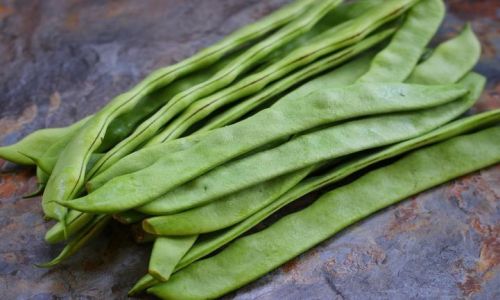

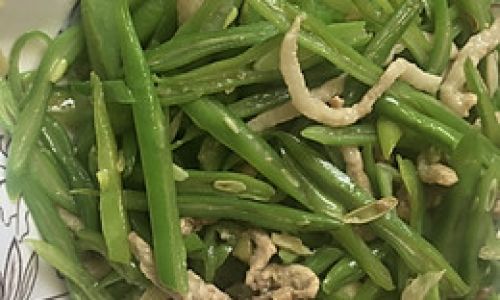


0 comments